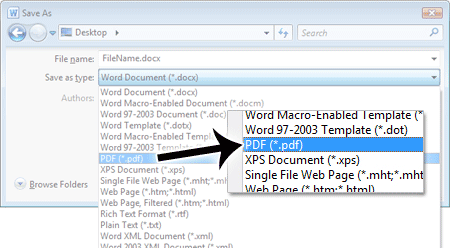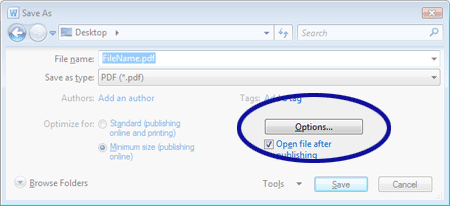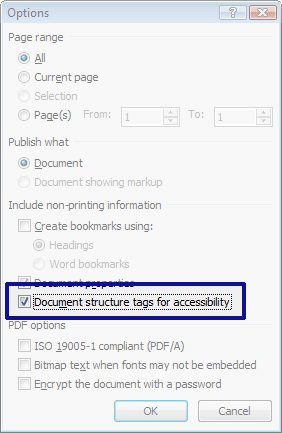Entries tagged "Microsoft Office"
Embed Outlook Shapes within Screenshots
When sending screenshots via e-mail, it may be necessary to highlight something in the image. That's where the insert shapes feature in Microsoft Outlook proves useful. The shapes, however, tend to shift once the e-mail is sent and may not even be pointing to the correct thing anymore. The screenshot could be modified using software like Adobe Photoshop, but there's a quicker way. [Continue reading]
Quickly Send Follow-up Messages with Microsoft Outlook
Have you sent an e-mail message and then quickly realized that something was forgotten. Maybe an attachment was missing or an important piece of information was left out. It's fairly easy to go through the sent items folder, forward the previous message, and include the new content. However, this requires us to re-add the contact information. That may not be much of a burden, but there's a quicker way. [Continue reading]
Compose E-mails Faster with Outlook Quick Parts
Over the years, I've found myself writing certain things again and again when e-mailing customers and clients. To save time from composing essential the same message, I tried looking for similar messages in the Sent Mail folder to use as a template. However, it can be difficult to locate those messages. That's where Microsoft's Quick Parts come in. [Continue reading]
Attaching Helper Files to Outlook Notifications
Some tasks are easier to accomplish when additional resources are readily available. When creating quarterly reports, the previous report would make a handy template. For events held annually, samples from last year's social media campaign could be included. Basically, if files are needed, they can be attached to the corresponding calendar entry in Microsoft Outlook. Then we don't need to hunt down a bunch of files when under pressure to complete the task. [Continue reading]
Keep Up with Deadlines by Using Microsoft Outlook’s Notifications Feature
When maintaining websites, there are bound to be tasks which need babysitting. Online registration forms, for example, need to be disabled after the registration deadline. If the person responsible for removing the form gets busy, they may forget all about the form. Instead, let's look at utilizing Microsoft Outlook to send notifications about tasks.
Sending E-mails in the Future with Outlook’s Delay Delivery Feature
Have you needed to remind someone about a topic at a later date? If so, do you typically need someone to remind you to send the reminder? Instead of assuming that you'll remember or adding another sticky note to your monitor, let's look at utilizing Outlook's Delay Delivery feature. [Continue reading]
Converting PowerPoint Files to PDF: Which Option to Choose
When posting PowerPoint files online, I usually upload a PDF version of the presentation since they tend to be smaller in file size. There have been more than a few times where the PowerPoint file is over 100 megabytes (mb) and is reduced to around 15mb PDF. With that said, there are at least 3 ways to create PDFs in PowerPoint and each option may produce files of different size. [Continue reading]
Save Paper by Printing Multiple Pages to a Single Sheet with Microsoft Word
My personal preference is to avoid printing whenever possible. It's bad for the environment, it costs businesses money, and I really like seeing my desk. But there are times when printing seems inevitable. Maybe something is needed for a meeting and you won't have a computer—or internet access. There are still ways to reduce how much paper you use by printing more than one page per sheet. [Continue reading]
Creating Accessible PDFs with Word 2010
The other day I needed to post a Word document online as a PDF. After opening Microsoft Word to make the conversion I discovered that the Acrobat tab (used to create tagged PDF documents) was missing. The problem is that I’m now using Word 2010 and the process for making a tagged PDF has changed.
What is a Tagged PDF?
When you’re tagging a PDF, you’re identifying what each thing is in the document. For example, you define what elements are headers, paragraphs, graphics, etc. In the end, you should have a PDF document that is more accessible to those viewing the file with an assistive technology device such as a screen reader. As a bonus, those tagged PDF documents are also more accessible to search engines (Google, Yahoo, etc.).
Creating a Tagged PDF in Word 2010
To convert a Word document into a tagged PDF, follow these steps:
- Open the document in Word 2010
- Click File
- Click Save As
- In the Save As dialog box, change the "Save as type" to PDF (See Figure 1)
- Click Options… (See Figure 2)
- Make sure the “Document structure tags for accessibility†option is checked (See Figure 3)
- Click OK and finish saving the document

Figure 1. Save As Type Selection

Figure 2. Save As Options Button

Figure 3. PDF Options Dialog Box
Once Microsoft Word has finished processing the document and added the tags, you should open the PDF file in Adobe Acrobat to verify that everything was tagged properly. Depending on how well the Word document was formatted and a number of other factors (such as document length), the verification process may take some time. The verification process is a little beyond the scope of this post, but I may post something on the topic in the future.
Related Resources
- PDF Accessibility – a WebAIM article providing an overview of the tools available in Adobe Acrobat to increase the accessibility of a PDF

